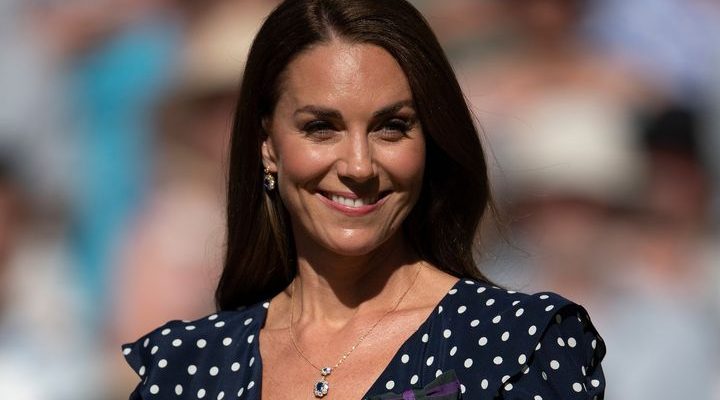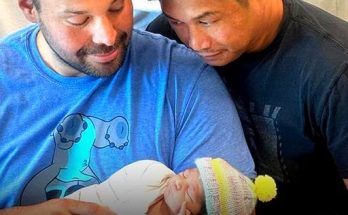
The British royal family is renowned for its deep-rooted traditions and customs that have been passed down through generations. While some of these practices may seem peculiar to outsiders, they hold significant historical and cultural significance within the monarchy. This article delves into the intriguing
One of the peculiar protocols observed when dining with the Queen is that everyone must stop eating once Her Majesty has finished her meal. This rule underscores the Queen’s authority at the table. However, it is unlikely that the Queen would abruptly end a meal without consideration for her guests. On one occasion, a former butler recounted an incident where a guest continued piling fruit onto his plate during dessert, unaware that the Queen had already finished eating. Although the guest was initially mortified upon realizing this breach of etiquette, the Queen graciously took a sip from her drink, allowing the guest to continue without feeling uncomfortable. This anecdote illustrates the Queen’s thoughtfulness and ability to put her guests at ease, even in situations involving strict protocol.
regardless of how much food remains on her plate. This tradition, rooted in etiquette and respect for the monarch, may appear strange to commoners but holds profound meaning within the royal household.
The article further reveals that the game of Monopoly is strictly forbidden within the royal family, a rule that dates back centuries and highlights the enduring nature of these customs.
While some may perceive these rules as mere relics of the past, the article suggests that they are deeply ingrained in the royal family’s way of life and may have been challenging for newcomers like Meghan Markle to adapt to.
The article invites readers to delve into the fascinating world of royal British trivia, promising to unveil more truly bizarre rules that Kate Middleton must adhere to, offering a glimpse into the intricate and often perplexing traditions that shape the lives of the British royals.
As we navigate the intricate world of royal etiquette, one of the most intriguing rules revolves around the Queen’s dining habits. It is customary for those dining with Her Majesty to conclude their meal once the Queen has finished, a subtle yet powerful display of her authority.
However, it is important to note that the Queen’s actions are guided by thoughtfulness and consideration. A former butler recounted an instance where a guest inadvertently continued piling fruit onto their plate during dessert, unaware that the Queen had already finished. Rather than causing embarrassment, Her Majesty gracefully took a sip, allowing the guest to continue without discomfort.
Another significant tradition involves the act of curtsying or bowing before the Queen. It is expected that Kate, and any other female, curtsy to Her Majesty upon their first encounter each day, as a sign of respect. Interestingly, Kate must also curtsy to Prince Charles and Camilla Parker Bowles when in their presence, as they outrank her. Furthermore, if Prince William is not by her side, she is outranked by “blood princesses” such as Princesses Anne, Eugenie, and Beatrice, who were born into royalty. Notably, if Kate is alive when her son Prince George ascends to the throne, she will be required to curtsy to him during his coronation ceremony.
These intricate protocols highlight the deep-rooted traditions and hierarchies that govern the British royal family, reflecting a rich tapestry of history and customs.
The royal family follows certain protocols and traditions that govern their public conduct and appearances. Here are some key points regarding royal etiquette:
Public Displays of Affection (PDAs): Heavy PDAs are generally frowned upon within the royal family. The Duke and Duchess of Cambridge, William and Kate, have been seen kissing on the lips only on their wedding day, reflecting the expectation of maintaining a professional demeanor in public.
Wedding Bouquets: It has become a tradition for royal brides to include myrtle in their wedding bouquets, a practice dating back to Queen Victoria’s eldest daughter. This symbolic gesture adds a touch of royal heritage to the floral arrangements.
Political Neutrality: Members of the royal family are expected to remain politically neutral and refrain from expressing political views or voting. This custom upholds the monarchy’s impartial stance on government matters in Britain’s democratic system.
Voting Abstention: While there is no legal prohibition against royals voting, they traditionally abstain from doing so as a matter of custom, maintaining their apolitical position.
These protocols and traditions aim to preserve the royal family’s dignity, professionalism, and neutrality, ensuring they uphold their symbolic role within the constitutional monarchy.

The royal family adheres to a set of unique dining rules and etiquette, some of which may seem unusual but serve specific purposes. One notable rule is the prohibition on ordering shellfish or rare meat when dining out or traveling abroad. This precaution is in place to prevent potential food poisoning or allergic reactions, which could disrupt their busy schedules. Despite this restriction, Prince William has admitted to being a fan of sushi, suggesting that the Duchess of Cambridge likely indulges in dishes like dragon rolls and uni on occasion.
Another peculiar rule is the ban on garlic at Buckingham Palace, reportedly due to the Queen’s dislike for its strong aroma. Former royal chef Darren McGrady revealed that they were prohibited from serving anything with garlic or excessive amounts of onions, as well as rare meat, as the Queen preferred her meat well-done.
Additionally, royal dining etiquette dictates that napkins must be folded in half after use to conceal any stains or crumbs, preventing unsightly messes and maintaining a clean appearance at the table.
While some of these rules may seem unconventional, they serve practical purposes, such as avoiding potential health risks, accommodating personal preferences, and maintaining a certain level of decorum befitting the royal family’s status.
There is a specific order in which members of the royal family enter a room, based on precedence and rank. Typically, Queen Elizabeth enters first, followed by Prince Charles, Camilla, Prince William, Kate Middleton, Prince Harry, and Meghan Markle.
When the Queen places her purse on the table, it signals that the event or gathering is coming to an end. This cue is meant for her staff to begin wrapping things up.
It is considered a breach of protocol to walk in front of the Queen. Even Prince Philip was not permitted to do so when he was alive. Kate Middleton and other royals must trail behind Queen Elizabeth. When William becomes king, Kate will likely have to follow the same rule with him.
These long-standing traditions and protocols govern the behaviors and movements of the royal family during official functions and events, reflecting the hierarchical nature of the monarchy.
Tea time is a cherished tradition in Britain, and the royals adhere to specific etiquette when enjoying a cup of tea. They hold the teacup handle with their thumb and index finger at the top, while the middle finger supports the bottom. This proper grip ensures a steady hand and prevents unsightly lipstick stains from forming around the entire rim. Additionally, the royals are expected to sip from the same spot on the cup, avoiding the common faux pas of extending the pinky finger.
When it comes to excusing oneself during a formal dinner, the royals have a discreet approach. Instead of announcing the need to use the restroom, they simply say “excuse me” and depart. This polite phrase is encouraged as it maintains decorum and avoids drawing unnecessary attention to personal matters. Adopting this practice can be beneficial for everyone, as it eliminates the need to share intimate details or risk unpleasant sounds disrupting the dining experience.
The royal family follows a set of etiquette rules and protocols that may seem unusual or outdated to the general public. One such rule dictates that royal women should maintain a specific posture when descending stairs or posing for photographs, with their chins parallel to the ground. While this rule exists, it is unlikely to be strictly enforced or monitored.

Additionally, there are certain words that are considered inappropriate or informal for members of the royal family to use in their speech. Words like “toilet,” “pardon,” “couch,” “living room,” “posh,” “patio,” and “perfume” are discouraged, as they are deemed too casual or common. However, it is improbable that there are dedicated personnel monitoring the royals’ language usage to enforce these restrictions.
While these rules and guidelines exist, their practical implementation and enforcement in modern times are questionable. They may be remnants of a more formal and rigid era, but their relevance and adherence in today’s society are debatable.
The royal family adheres to certain traditions and protocols that may seem unusual to outsiders. One such tradition involves the attire of young boys. Until recently, Prince George was only seen wearing shorts, even on formal occasions. This practice stems from an upper-class tradition that the royal family closely follows, where young boys are expected to wear shorts until they reach a certain age.
Another protocol observed by royal women is the requirement to wear hats or fascinators at formal events. This rule dates back to the 1950s when wearing hats was a common practice. However, there is a caveat that allows royal women to remove their hats after 6 p.m., which explains why Kate Middleton is often seen without a hat at evening events or wearing a tiara for official occasions.
These traditions, while seemingly peculiar, are deeply rooted in the royal family’s history and serve as a way to maintain their unique identity and customs.

When it comes to royal births, there is a strict protocol in place. Although Kate and William announced the arrivals of their three children to the public shortly after, the Queen was the first to know, via an encrypted phone conversation. This is not merely due to her role as the great-grandmother but rather a rule that applies to all royal births. In fact, the details surrounding royal births are closely guarded secrets. The tragic aftermath of a nurse being duped into revealing Prince George’s birth details by radio hosts highlights the importance of this confidentiality.
Another intriguing royal tradition involves packing a black outfit when traveling abroad. This practice stems from an incident in 1952 when the Queen, then Princess Elizabeth, did not have a black outfit with her when her father passed away while she was overseas. As a result, a mourning dress had to be brought onto her plane upon landing in London. Since then, it has become a requirement for all royals to pack black clothing when traveling, just in case a family member passes away during their trip. While some may view this as morbid or superstitious, it is actually a thoughtful gesture that allows the royals to immediately observe the appropriate mourning customs.



